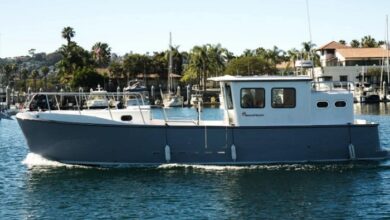Commercial pilot helicopter training in Miami: choose pilot aviation school

Becoming a commercial helicopter pilot is a rewarding path that combines technical skill, responsibility, and the thrill of flight. From air medical services and search and rescue to utility work and executive transport, the demand for skilled rotorcraft pilots is growing. This guide covers everything you need to know to start your journey—from prerequisites to career opportunities.
Understanding the Role of a Commercial Helicopter Pilot
Commercial helicopter pilots operate rotorcraft for compensation. Their roles vary widely and may include:
- Aerial tours and charters
- Emergency medical services (EMS)
- Agricultural spraying
- Search and rescue
- Utility and construction operations
- Law enforcement and surveillance
- Offshore oil rig transport
These pilots are trained to fly in diverse environments, often under pressure and in challenging conditions, making safety and precision paramount.
Prerequisites for Training
Before enrolling in commercial helicopter pilot training, you must meet certain baseline requirements:
- Age: Minimum of 18 years old to be eligible for a Commercial Pilot License (CPL).
- Medical Certification: Must obtain a second-class FAA medical certificate from an Aviation Medical Examiner (AME).
- Education: A high school diploma or equivalent is typically sufficient; no college degree required, though it may help with career progression.
Types of Helicopter Pilot Licenses
Training generally progresses through the following certifications:
- Private Pilot License (PPL-H): The foundation for all flight training. Allows non-commercial flying.
- Commercial Pilot License (CPL-H): Permits you to fly for hire or compensation.
- Instrument Rating (IR-H): Enables flight under instrument flight rules (IFR), expanding job options, especially in poor weather or airspace-controlled operations.
Optional: Some pilots continue to instructor certifications (CFI-H/CFII-H) to gain experience and build hours.
Training Curriculum
The training program for commercial helicopter pilots typically includes:
Ground School:
- Aerodynamics and helicopter systems
- Weather and meteorology
- FAA regulations and airspace
- Navigation and flight planning
- Emergency procedures
Flight Training:
- Basic and advanced helicopter maneuvers
- Autorotations and emergency landings
- Night flying
- Cross-country navigation
- Instrument procedures (if pursuing IR)
Training is often conducted in rotorcraft such as Robinson R22, R44, or Bell 206.
Choosing the Right Flight School
When evaluating helicopter flight schools, consider the following:
- FAA certification (Part 61 vs. Part 141)
- Instructor experience and student-to-instructor ratio
- Fleet condition and availability
- Simulator availability (for instrument training)
- Location/weather conditions
- Graduate success and employment support
- Veterans benefits or financing options
Always visit the school, speak with instructors, and request a Discovery Flight if possible.
Cost of Training
Training costs vary by location, aircraft type, and school structure. On average:
| License/Rating | Estimated Cost (USD) |
|---|---|
| Private Pilot License | $18,000 – $25,000 |
| Commercial License (CPL) | $30,000 – $45,000 |
| Instrument Rating (optional) | $10,000 – $15,000 |
Total (PPL + CPL): $50,000 – $70,000
Prices include aircraft rental, instructor time, ground school, and exam fees.
Flight Hours and Experience Requirements
The FAA mandates a minimum of 150 total flight hours for a Commercial Helicopter Pilot License, including:
- 100 hours in powered aircraft
- 50 hours in helicopters
- 20 hours of flight training
- 10 hours of solo flight time
- Cross-country and night flying requirements
In practice, most pilots graduate with 180–200 hours to meet employer expectations.
Preparing for the FAA Written Exam
To obtain a CPL, you must pass the FAA knowledge test (written exam), which includes:
- 100 multiple-choice questions
- Topics: aerodynamics, regulations, systems, navigation, weather
Study Resources:
- Gleim or ASA test prep books
- Online ground schools (e.g., King Schools, Sporty’s)
- FAA’s Helicopter Flying Handbook (free PDF)
Tip: Pair studying with actual flight lessons to reinforce knowledge.
Practical Flight Test
The final step is the checkride, administered by an FAA Designated Pilot Examiner (DPE). It includes:
- Oral exam: Regulations, systems, flight planning, emergency scenarios
- Flight test: Demonstration of skills including takeoffs, landings, autorotations, and navigation
Preparation involves mock checkrides and review flights with your instructor.
Career Prospects and Advancement
After certification, new pilots often start as instructors (CFI-H) to build hours and gain experience. From there, common career paths include:
- Tour pilots in scenic areas (e.g., Grand Canyon, Alaska)
- EMS pilots after 1,000–2,000 flight hours
- Utility and offshore transport
- Law enforcement or corporate flying
With time, pilots can specialize in high-demand sectors like search and rescue or international operations. Salaries range from $45,000–$100,000+ depending on role and experience.
Conclusion
Commercial helicopter pilot training is a structured, rewarding process that opens doors to a wide range of exciting careers. With the right school, proper preparation, and determination, you can move from your first hover to flying professionally in under two years.
If you’re serious about making rotorcraft your profession, start researching schools, take a Discovery Flight, and begin mapping your flight plan to the sky.
